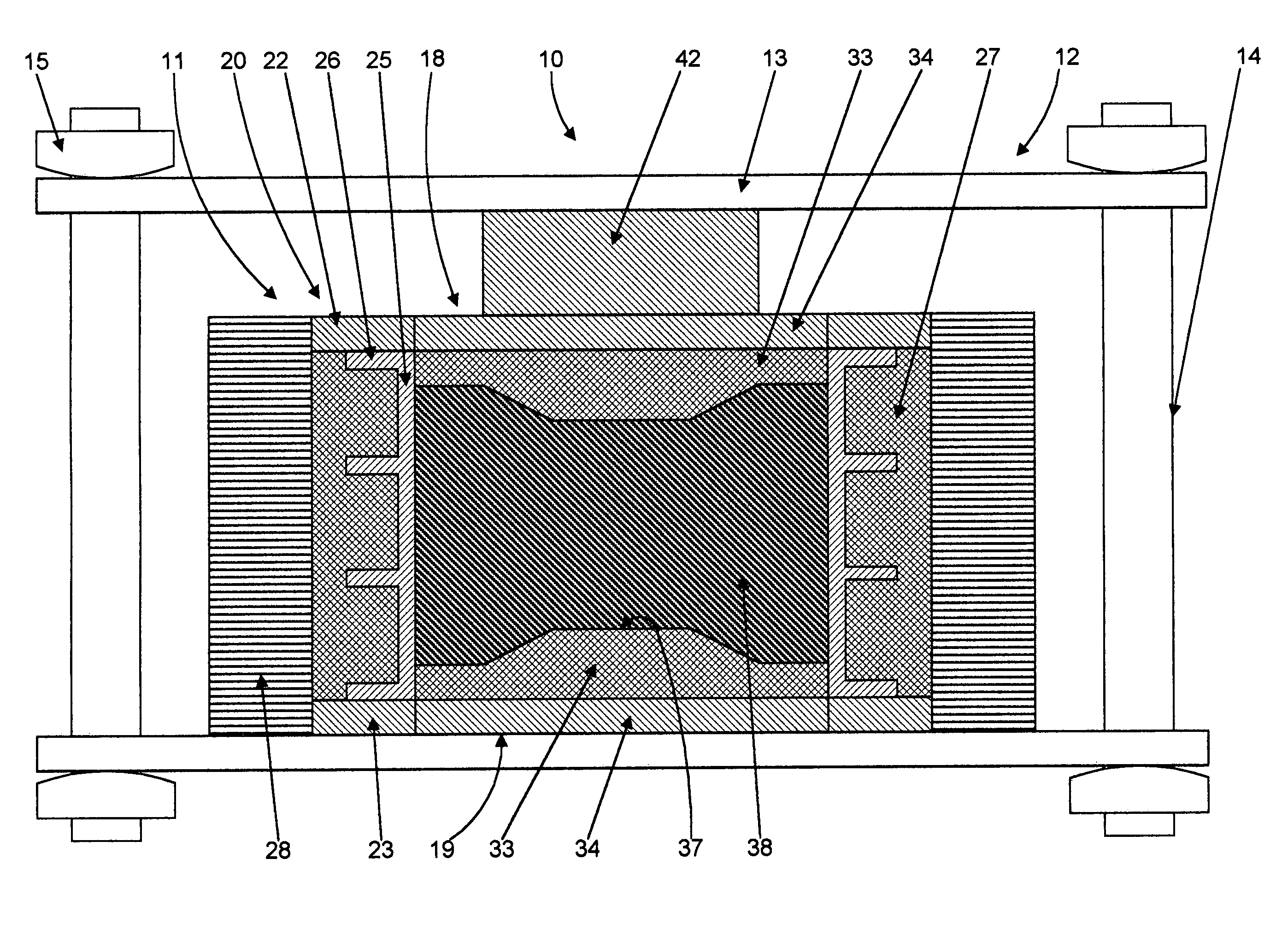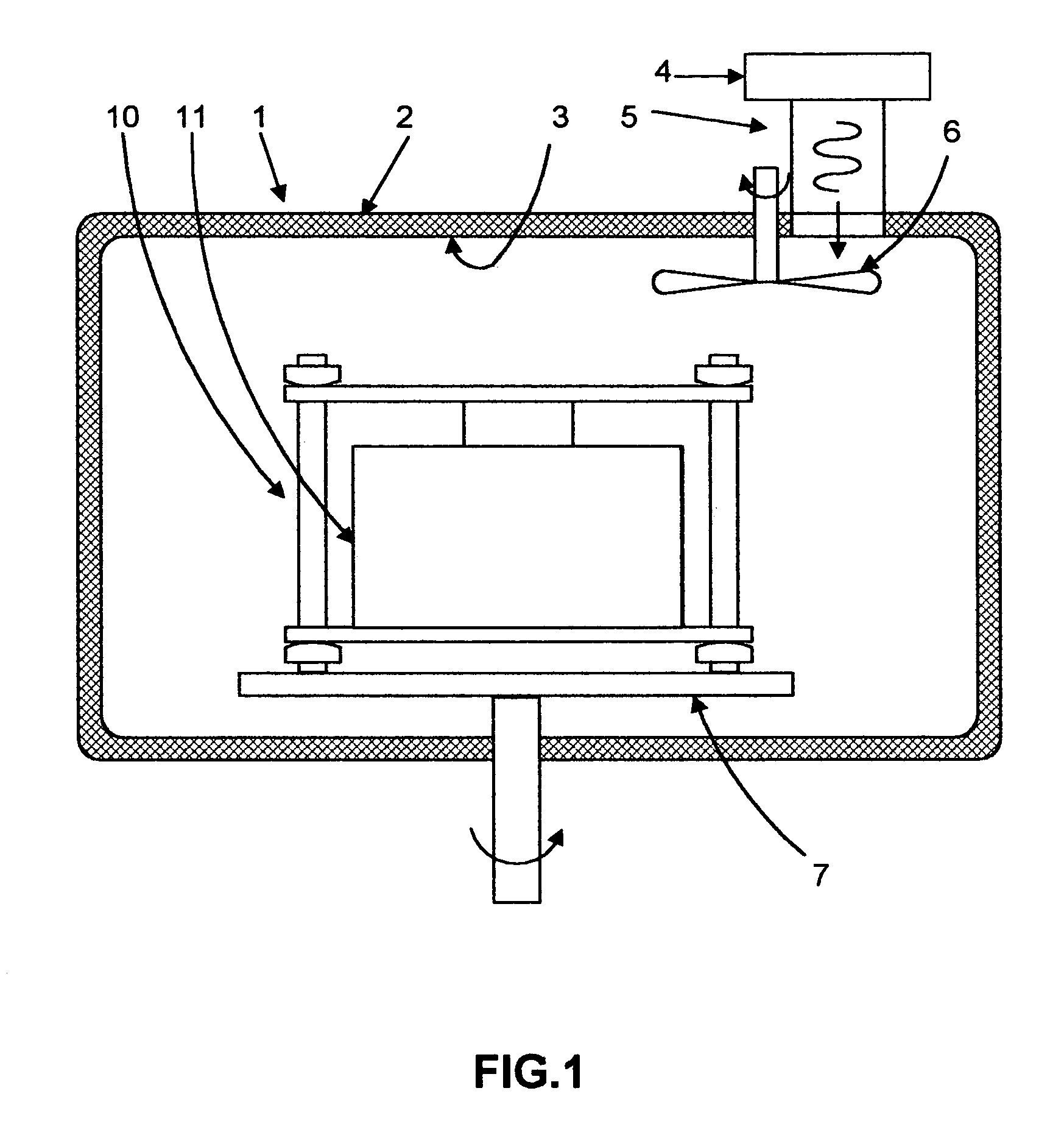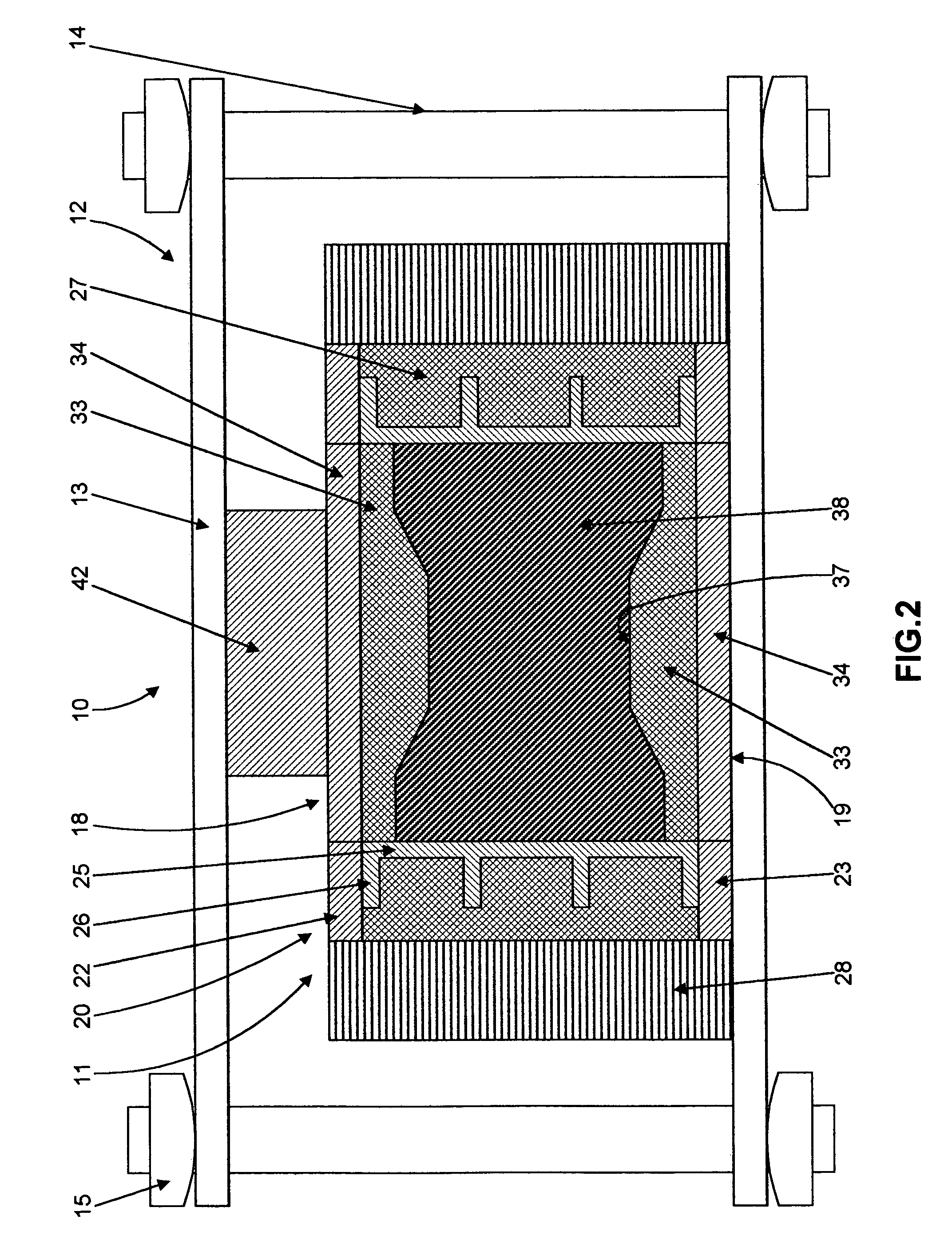Microwave molding of polymers
a technology of micro-wave energy and polymer, which is applied in the direction of auxillary shaping apparatus, manufacturing tools, coatings, etc., can solve the problems of increased thermal gradient, inability to meet the needs of manufacturing, and design that does not provide uniform heating of work materials, etc., to achieve efficient heating of microwave energy, easy mold parts fabrication, and smooth surface finish
- Summary
- Abstract
- Description
- Claims
- Application Information
AI Technical Summary
Benefits of technology
Problems solved by technology
Method used
Image
Examples
example 1
Mold for Parts 5″ in Diameter
[0081]A mold of the type generally shown in FIG. 2 as mold 11 was created for molding a part having a diameter of 5 inches. The mold includes a metal cylinder or sleeve 25 with an inner diameter of 5 inches and a height of 4 inches. The outside diameter of each molded part or workpiece 39 formed by the mold is 5 inches, and the approximate height of the work piece 39, after compaction, is approximately 1.8 inches. The mass of the metal sleeve 25 is 3 kg and the mass of the ceramic microwave absorbing layer 27 extending around sleeve 25 is 1.8 kg. The mass of the microwave absorbing layers 33 and 34 of end mold members 18 and 19 are 1.1 kg each. From here, we can find that the quotient Mceramic / Mtotal for the sidewall member 20 is equal to 0.37 while for top and bottom plungers it is equal to 1. This should be taken in to account while using formula (4) for determining the quantity of the additives to be added to the base mold material of each mold member...
example 2
[0092]The same sidewall mold member 20 as in Example 1 was used with end mold members 18 and 19 including metal layers 52 and 53 to form a mold similar to mold 50 shown in FIG. 5. The mass of each metal layer 52 and 53 is 0.3 kg. The mass of each of the ceramic microwave absorbing layers 54 and 55 remained 1.1 kg each. The quotient Mceramic / Mtotal for the end mold members 18 and 19 is equal to 0.78. From formula (4) it is observed that ceramic microwave absorbing layer 54 and 55 require 1.3 times higher the value of parameter (tan δ / ∈cρ) in comparison with that of layers 33 and 34 of Example 1 without metal layers 52 and 53. Hence, the metal clad end mold members 18 and 19 require the addition of less Al2O3 into the SiC base material to satisfy equation (4).
[0093]The molding process for this mold, of the type shown in FIG. 5 as mold 50, was performed in the same oven with approximately the same heating schedule as described in Example 1. Molded parts of diameter 5″ and 1.8″ thick we...
example 3
Mold for Square Parts 12.25″×12.25″
[0095]A mold of the type shown in FIG. 2 as mold 11 was formed with a square metal cylinder or sleeve 25 forming the inner surface of the sidewall mold member 20 and defining a square mold cavity 12.25 inches by 12.25 inches with a height of 5 inches. The resulting molded parts have a shape of square plates, 12.25 inches by 12.25 inches with a height after compaction and consolidation of approximately 2 inches. The first version of this mold, did not include metal layers on the end mold members 18 and 19. The mass of each end mold member 18 and 19 is 8.1 kg, the mass of metal sleeve 25 of sidewall mold member 20 is 21 kg, and the mass of the ceramic microwave absorbing layer 27 of sidewall 20 is 15 kg. The quantities of Al2O3 additives for each mold member were chosen individually using formula (4) as described above.
[0096]The molding process was performed in a batch microwave oven 1 operating at a frequency of 915 MHz. The dimensions of the chambe...
PUM
| Property | Measurement | Unit |
|---|---|---|
| temperatures | aaaaa | aaaaa |
| pressures | aaaaa | aaaaa |
| temperatures | aaaaa | aaaaa |
Abstract
Description
Claims
Application Information
 Login to View More
Login to View More - R&D
- Intellectual Property
- Life Sciences
- Materials
- Tech Scout
- Unparalleled Data Quality
- Higher Quality Content
- 60% Fewer Hallucinations
Browse by: Latest US Patents, China's latest patents, Technical Efficacy Thesaurus, Application Domain, Technology Topic, Popular Technical Reports.
© 2025 PatSnap. All rights reserved.Legal|Privacy policy|Modern Slavery Act Transparency Statement|Sitemap|About US| Contact US: help@patsnap.com



